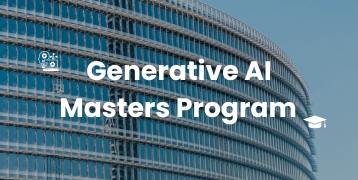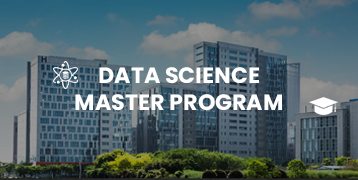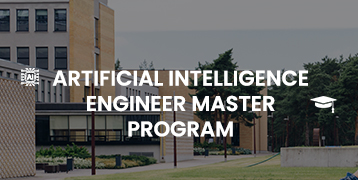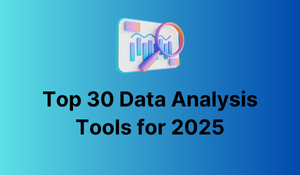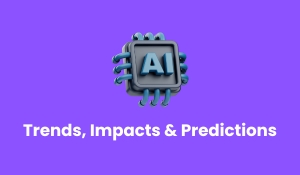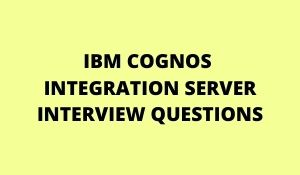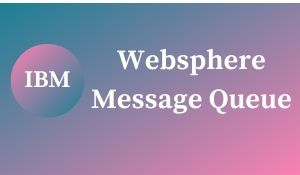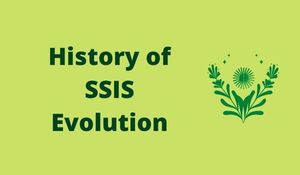
What is SSIS?
SQL Server Integration Services (SSIS) is the anchor in a growing suite of merchandise that make up the Microsoft SQL Server Business Intelligence (BI) platform. What makes SSIS so necessary is that besides the records motion and cleaning points that SSIS brings to the table, the different SQL Server BI merchandise can’t operate. In its easiest form, SSIS is an enterprise-level, in-memory ETL tool.
However, SSIS is now not simply a fancy wrapper around an import wizard. In a drag-and-drop improvement environment, ETL builders can snap collectively elaborate workflows and out-of-the-box data-cleansing flows that rival customized coding and highly-priced million-dollar, third-party tools. The quality aspect of SSIS is that you have already paid for it when you license SQL Server.
If you desire to enrich your profession and end up an expert in SSIS, then Enroll in Our “SSIS Online Training” This direction will assist you to reap excellence in this domain.
History of SSIS
The SQL Server’s 2014 introduction of SSIS is similar to the SQL Server 2008 R2 release in terms of scope. With the closing launch of SQL Server 2008 R2, the Microsoft SSIS group did very incremental modifications after a very giant SQL Server 2008 release.
In the SQL Server 2012 release, Microsoft had centered on SSIS manageability, making it less complicated to set up and execute. Also brought in 2012 are strong new facts and cleaning factors that assist you in standardizing and observing statistics anomalies.
Furthermore, upgrades to the improvement equipment will assist make SSIS builders greater productive and assist new builders in getting up to pace extra easily. The SQL Server 2014 launch makes use of a more recent model of Visual Studio however, all in all, it will sense a good deal like SQL Server 2012.
Data Transformation Services in SQL Server 7
Everything began on SQL Server 7 which used to be launched in 1998. This used to be an easy device to export and import statistics and automate some tasks. The identity was once Data Transformation Services.
| Learn more information from the GoLogica “SSIS Online Training“ |
Data Transformation Services in SQL Server 2000
SQL Server 2000 grew to become a very famous database. Microsoft used to be beginning to compete with Oracle and offered thousands and thousands of SQL Server licenses around the world. At that time, the Data Transformation Services were treated in the SQL Server Enterprise Manager, which was once changed to SSMS later. Data Transformation Services has a few tasks and relationships.
In SQLServerCentral we have a historical article about DTS to make you sense nostalgia: Overview of DTS Packages
SSIS 2005 BIDS
SQL Server 2005 modified the interface to create packages. The title used to be modified from Data Transformation Services to SQL Server Integration Services. The device to create applications is no longer so unique from what we have now:
In SSIS 2005, we used to work with the BIDS (Business Intelligence Development Studio) which was once the father of the SSDT. BIDS used to be blanketed in the SQL Server Installer. The tasks, sources, and locations increase dramatically. At that time, it was once a serious and expert device to combine data.
We have an article on SQLServerCentral on migrating Data Transformation Services: SSIS Upgrade for SQL Server 2000 DTS Packages
If you favor seeing an introduction to SQL Server 2005, right here you have one of our articles: Overview of SSIS.
SSIS 2008
In SSIS 2008, they introduced an ADO.net source, Data Profiler, an enhancement to the search for transformation. Allow the usage of the Change Data Capture Feature and greater features.
Here we wrote an article about compatibility mistakes between BIDS 2005 and 2008.
SSIS 2012 – SSDT
Starting on SQL Server 2012, the BIDS was once changed with the SQL Server Data Tools (SSDT). SSDT is an extension of Visual Studio used to create SSIS initiatives and different sorts of projects. With that version, there had been SSIS Deployments, Zoom, Undo, and enhancements. The SSIS toolbox, Change Data Capture components, ODBC Source, and Destination components, an Expression Task, Data Quality Services task, parameters, environments, and different features.
Currently, the installer is nonetheless reachable here, however, it may additionally trade in the lengthy run: SSDT 2012 installer.
SQL Server Integration Services 2014 – SSDT
In SQL Server 2014, the SSDT was once eliminated from the installer. Starting on that version, it was once vital to deploy separately. The SSDT commenced to be a section of VS, so the model of SSDT suits the Visual Studio version.
SSDT relies upon Visual Studio. Currently, the VS variations accessible with SSDT are the following:
- Firstly, SSDT for VS 2012
- Secondly, SSDT for VS 2013
- Thirdly, SSDT for VS 2015
- Also, SSDT for VS 2017
- In addition, SSDT for VS 2019
- Finally SSDT for VS 2022 Preview
In VS 2019 and VS 2022 in the Data Storage and processing, you will discover the SQL Server Data Tools:
Firstly, to create SSIS projects, you will want to go to Visual Studio and go to Extensions> Manage Extensions.
You will want to search for SSIS and download SQL Server Integration Services Projects, and press download.
Once downloaded, you want to install the executable file.
SQL Server Integration Services 2016
SSIS 2016 got here with the following changes:
- Incremental Package Deployment
- For SSIS catalogs, support for Always-on is available.
- Support for Always Encrypted SSIS catalogs.
- Enhancements on debugging and logging levels.
- OData, Big Data, SAP BW, Teradata, and PDW are all supported.
- Azure Storage connectors and additionally Hive and Pig
- Microsoft Dynamics Online, Azure Data Lake, and Synapse are all supported.
SQL Server Integration Services 2017
One of the new adjustments used to be the help of Linux. You can run SSIS programs on Linux computers. Also, the Scale-out approves executing programs throughout various computers. Starting on this model you can set up programs in Azure Data Factory.
SQL Server Integration Services 2019
On this version, they brought a Flexible file assignment that lets into work with documents regionally and in Azure. Microsoft additionally brought the Flexible supply file and vacation spot with an equal concept.
What is the future of Integration Services?
SQL Server Integration Services is nevertheless a very famous software program for Data Integration. Informatica, SSIS, Pentaho, Qlik, Talend, ODI, and Azure Data Factory are some of the most famous Data Integration, purposes in the World.
However, Microsoft retired from the SSIS certification assessments in January 2021. Also, there have been no longer too many enhancements in the remaining versions. The layout in my opinion is that Microsoft will no longer proceed with enhancing SSIS and will work on Azure Data Factory to substitute SSIS in the lengthy run. In general, Microsoft is attempting to persuade everybody to cross Azure. The groups using the second are generally in a mixed mode (some on-premises servers and some offerings in the Cloud such as Azure, AWS, Google, and different cloud platforms). So, I bet that SSIS will lose its reputation in the long run and Microsoft will deprecate it in 10-20 years.
Conclusion
SQL Server Integration Services furnishes duties to seriously change and validate statistics for the duration of the load method and transformations to insert statistics into your destination. Rather than create a saved process with T-SQL to validate or exchange data, is right to understand the exclusive SSIS duties and how they can be used.
Related Articles:
🎯 Microsoft Power Map Reporting Content from SQL Server
🎯 MICROSTRATEGY ADMIN INTERVIEW QUESTIONS-2021
🎯 Tutorial on Microsoft Powerapps
🎯 Updated VB .Net Interview Questions -2021
🎯 What are Microsoft PowerApps used for?
🎯 What is Power Automate in Microsoft Power Platform?

